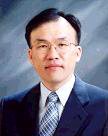
Hybrid Structural Health Monitoring Techniques for Prestressed Structure
Jeong-Tae Kim
Department Head and Professor, Departament of Ocean Engineering
Pukyong National University, Busan, South Korea
Abstract: A variety of prestressed structures have been widely constructed around the world. They include, but not limited to, concrete girders, cable-stayed bridges, nuclear containments, and subsea ‘Archimedes’ tunnels. Applying prestress force gives many benefits: the strength of the structure could be increased and the structural weight would be reduced, at the same time. So structures can be bigger, larger and even slimmer. Relying on the prestressing technique, however, is followed by severe risks since the prestress-loss may induce the significant reduction of load carrying capacity and even global structural failure.
Concerned with the above-mentioned issues, a hybrid structural health monitoring (H-SHM) methodology of prestressed structures via smart sensor techniques has been studied by the research team at Pukyong National University, Busan, Korea. The first part of the presentation presents the methodology development of H-SHM via smart sensors. First, prestress-loss estimation methods have been formulated on vibration characteristics and electro-mechanical impedance responses, respectively. Second, a hybrid method has been performed to discriminate multi damage types in prestressed structures. Third, multi-scale vibration-impedance sensor nodes have been designed based on the Imote2 sensor platform.
The second part of the presentation introduces a field application of the H-SHM techniques and wireless sensor network to a cable-stayed bridge. The performance of the sensor nodes has been evaluated in lieu of wireless communication, solar-power supply and modal parameter extraction. For long-term monitoring, the effects of ambient and loading histories including temperature variation, wind and typhoon on the bridge’s characteristics have been experimentally investigated.
Bio: Dr. Jeong-Tae Kim received his Ph.D. in Civil (Structural) Engineering from Texas A&M University in 1993. He has worked on the faculty at Pukyong National University for 21 years, where he currently serves the Head in Department of Ocean Engineering. He has led BK21Plus Program “human resource for eco-friendly multi-functional coastal-harbor structural system”, granted by Korean Government for the last 10 years. He has served as editors, chairs, board members for several journals and conferences. He currently serves as an editor-in-chief of Structural Monitoring and Maintenance, an international journal, Techno-Press.
Dr. Jeong-Tae Kim’s research has been primarily in the area of damage detection and system identification theories, structural health monitoring techniques, smart sensors and wireless networks, and application of SHM techniques to civil infrastructures. His research experiences include: Structural health monitoring system for wind power plants (2014-2017); Structural health monitoring of harbor structural systems (2010-2016); Damage identification techniques for undersea structures (2011-2015); Field evaluation of smart sensors for cable-stayed bridges (2011-2013).
He authored or edited three books, published over 300 papers including 70 SCI-indexed journal papers and 150 international conference papers. He also registered two patents on electromechanical impedance-based SHM techniques. Dr. Kim has been awarded as Premier Professor of the Year 2008-2013 from Pukyong National University.
Back to Speakers